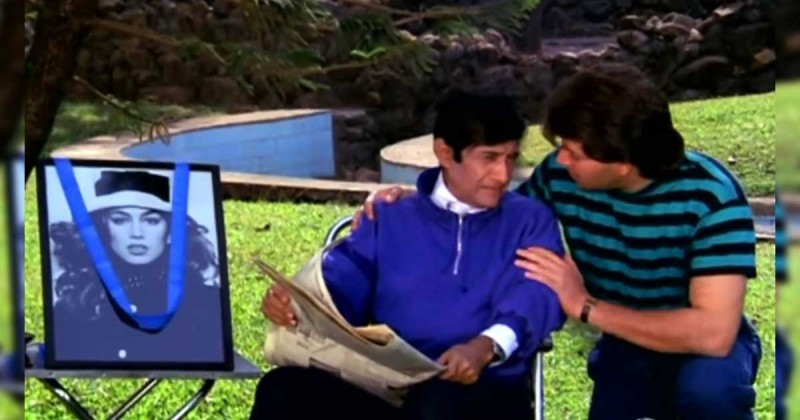
There are moments in the vast tapestry of cinema that frequently leave viewers surprised and intrigued, moments that seem to connect seemingly unrelated worlds. An illustration of this can be found in the 1990 movie "Awwal Number," where an American supermodel unexpectedly makes an appearance, albeit in the form of a picture frame. By casting none other than Cindy Crawford, a well-known American model, as his on-screen mother, the renowned actor and filmmaker Dev Anand was able to create an unlikely link between Bollywood and the world of international fashion.
Cinema has a remarkable capacity to obfuscate the boundaries between imagination and reality, creating worlds that enthral and astound viewers. One such movie that combined the worlds of cricket and espionage with a dash of the unexpected—Cindy Crawford's appearance, albeit in a photograph—was "Awwal Number," which was released in 1990. Even though it only lasted a few minutes, this intriguing cameo gave the movie a special touch and a sense of surprise that left many viewers speechless.
Cindy Crawford is experienced on the global stage. She rose to become a universal representation of style and glitz thanks to her distinct beauty and unmistakable presence. Crawford gained notoriety for her runway appearances, magazine covers, and endorsements. Her name came to represent beauty and class. Her inclusion in "Awwal Number" served as both an unexpected twist and a tribute to how cinema has a global audience that knows no borders.
Cindy Crawford's image plays the mother in "Awwal Number," a film starring Dev Anand. With characters from very different backgrounds joining together in a single story, this intriguing cameo demonstrated how cinema can intersect with real life. An intriguing contrast that encourages discussion is produced by contrasting the world of a Bollywood legend with the image of an American supermodel.
The use of Cindy Crawford's image as Dev Anand's mother is an example of how cinema can surprise, amuse, and defy expectations. This cameo not only gives the movie an extra layer of intrigue, but it also prompts viewers to consider the surprising relationships that can develop in the world of storytelling. It exemplifies the essence of cinema as a form of expression that crosses boundaries, whether they be physical, cultural, or even ones related to high fashion.
It is also possible to interpret Dev Anand's choice to use Cindy Crawford's image in "Awwal Number" as a reference to the universal appeal of both film and fashion. It stands for the way that entertainment and the arts can appeal to people of all ages and socioeconomic backgrounds. This inclusion serves as evidence of the wider influence of film and its capacity to connect with people in various parts of the world.
There are many different kinds of surprises in the constantly changing world of cinema. Cindy Crawford's picture appearing in "Awwal Number" serves as a reminder that the world of storytelling is limitless and full of surprising connections. This cameo is a testament to the ability of film to create moments that captivate audiences and ignite conversation, showing them that even the most unlikely of connections can result in iconic scenes that capture the spirit of the medium.
Hrithik Roshan's Path from Child Extra to Bollywood Luminary
The Extraordinary Transformation of a Bollywood Icon
Shilpa Shetty's Remarkable Birthday Equation with Raj and Akshay